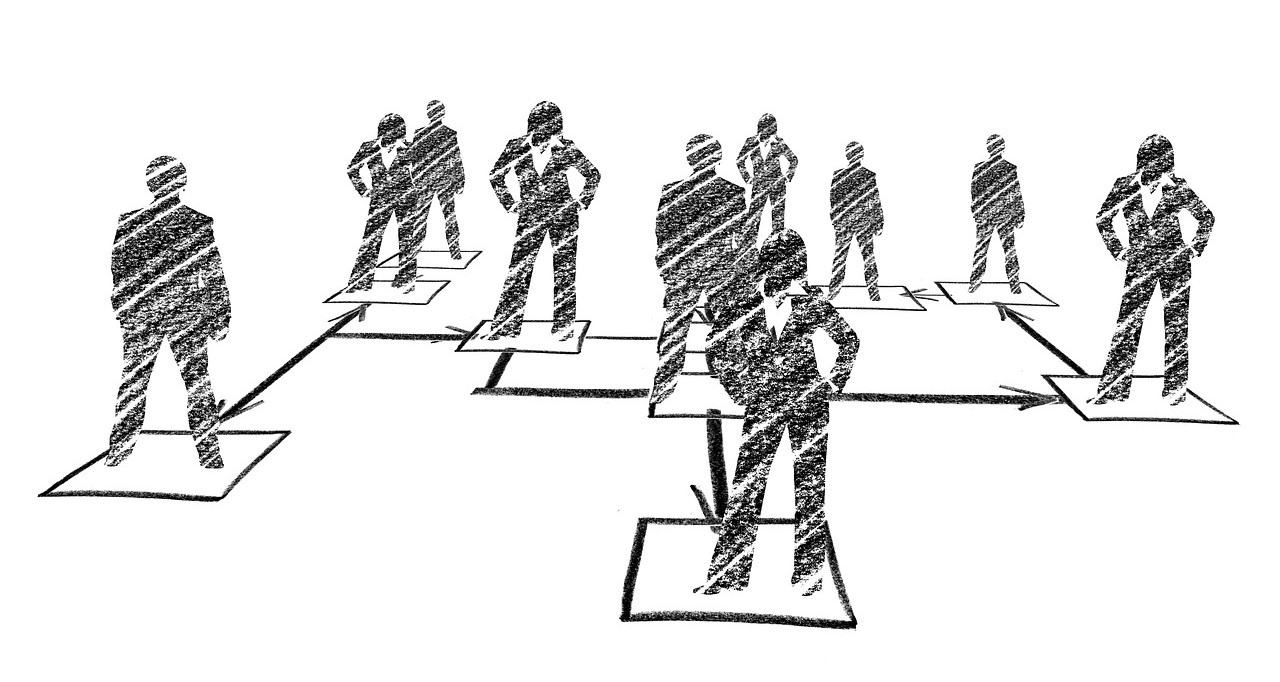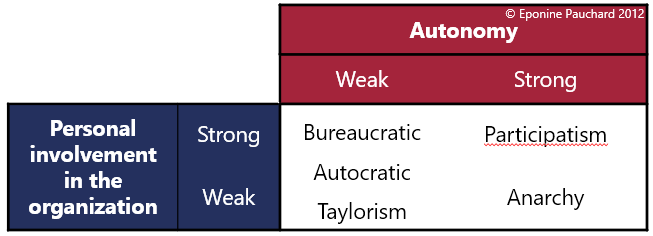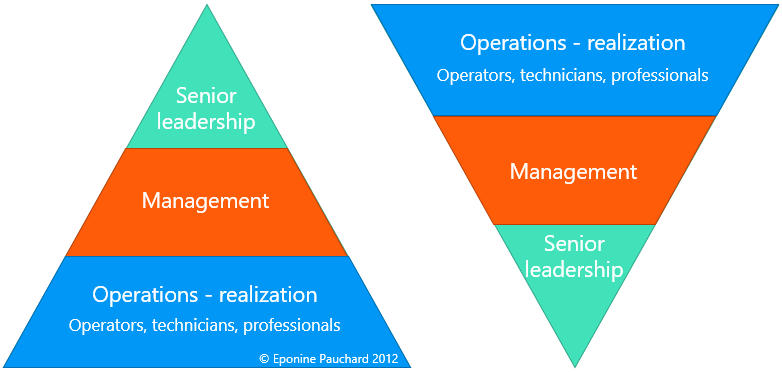Beyond all the tools and methodologies in place, the success of a company is always linked to the corporate philosophy and culture. With the right mindset and organizational structure to support it, the organization can be successful on a daily basis. It will also be more efficient in case of major problems. It is resilience, the ability to overcome obstacles.
In this article, I will review the different types of organization. Then I will focus more specifically on the participatory model, and the concept of the “inverted pyramid”.

The different types of organization
To differentiate the organizations, we can look at two axes: the level of autonomy and personal involvement.
- The level of autonomy refers to the teams’ degree of freedom. To what extent can they choose how, with whom and when they work?
- Personal involvement is linked to a sense of belonging, pride in being part of the organization and conformity with the values and rules in effect.

Models with low employee autonomy
Taylorism: This model was created by Taylor around 1880. It is “the scientific organization of work”. The model isolates those who think the work (the Methods service) from those who do the work (the operators). The hierarchy is requiredto transmit the instructions and the orders to the operational teams. Without guidelines, the executors remain without initiative. Operators come to work, perform the tasks, and are often not involved in their organization, it is a job like any other.
Autocracy: This model is the result of an individual behavior (leader who wants to control everything) or an institutionalization of the system. Executors may suggest, but hierarchy approval is required for all topics.
Bureaucracy: The latter model depersonalizes power by transferring it into procedures. The organization is effective as long as a procedure provides the answer to the problem. Its weak point lies in its heaviness and lack of responsiveness.
This model is present in many companies. It is particularly relevant in high-risk sectors such as the operation of a nuclear reactor, aeronautics or the pharmaceutical industry. The teams are strongly involved in their organization and support the model in place.
Models with high employee autonomy
Participatory: This is the model that I detail in this article. Teams are engaged, they embrace the mission, the vision and the way things work, but they are also very free to act.
Anarchy: This is the main risk when an organizational shift does not take into account the involvement of the teams. Everyone is free to work as they wish, but there is no common vision or values. These companies are disappearing because they are underperforming.
The pyramid concept
The use of the geometric shape of the triangle is used to describe many models: needs mapping according to Maslow, food categories to consume, risks and gravity according to Heinrich, … Usually, the triangle highlights a voluminous base supporting a narrow top.
In Maslow’s hierarchy, we find the basic physiological needs at the bottom and personal fulfillment at the top. The base of the food pyramid contains water, its top, sweet products. In Heinrich’s model we find a large number of incidents or risks at the base for a fatal accident or a disaster at the top.
The classic pyramid organization

In a classic pyramid organizational model, the base is associated with the large number of employees and the lowest number of leaders. The power is located at the top of the pyramid. It is also at the top of the pyramid, with the leaders that lies the authority.
This model is described as directive. The summit knows what needs to be done to move the company forward. At the extreme, a few years ago, the base was considered “hands”. Employees were almost asked to drop their brains at the entrance to the company and pick it up at night.
With this way of managing, replacing hands with robots or hands in a country where labor is cheaper is a choice that can be understood.
A pyramid resting on the tip
In a participatory organizational model, the mentality is very different. The people who produce, realize and who know are the employees. The management is there to give direction and provide guidelines. They are there to support the employees in their daily work.
Knowing the direction to take and their work, employees will be able to propose solutions, improvements to make their job sustainable, as well as the organization.

The image of the inverted pyramid highlights employee knowledge. The inverted model seems wobbly, and it is indeed the case: it is more difficult to manage than a directive model. If management does not give clear instructions and does not involve its employees, we are heading straight for anarchy!
To successfully shift to a participatory approach, it is imperative to clearly understand the new responsibilities of everyone. Power is given to employees, leaders will support them in their achievements.
The tasks of supervisors and managers also change. In the directive model, they were forwarding instructions and solving problems in “urgency” mode.
In the participatory model they become mentors. They support their team’s empowerment, guide them to give them a chance to solve their problems themselves Managers focus on strategic direction and skills development.
It’s very different for everyone. Such a change of organization is not done by snapping one’s fingers. It’s a culture shift that takes time and support at every level of the organization.
